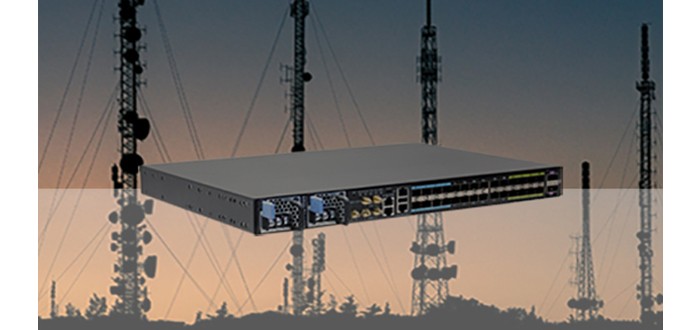[英文] 5G蜂巢基地台回傳路由器, 加速電信商佈建, 創新網路服務
by Andrew Lui

One of the big four telecoms in Taiwan recently announced that they have chosen our disaggregated cell site gateway solution for their 5G network rollout. Although, 5G is nothing new in Taiwan, I do believe this will be Taiwan's first installation of a white box cell site gateway router. In their press release, they mentioned that they chose to use our disaggregated cell site gateway routers because it allows them to build a next generation network architecture for 5G. This really says something about the reality of how disaggregated white box platforms and open network solutions benefits telecommunication companies (telecoms).
Just in case some of these terms sound unfamiliar, here’s a short description on white box and open network. Then you will start to see the benefits for telecoms by using disaggregated cell site gateway routers in their network.
What is a white box? Think non-proprietary. Back in the day, most if not all, telecom networking equipment were proprietary, which meant the hardware and software components were built and supplied by a single vendor. Over the years, this led to a very inflexible and expensive networking system. In turn, this led to the development of white box hardware, or equipment built using merchant silicon that does not run proprietary software, rather it can run any type of software. That's because the software is separated, or disaggregated, from the hardware.


Why would white box platforms and open networking be of any interest to telecoms?
I believe the telecom industry has always kept an eye on the potential of implementing white boxes and open networking during its popularity growth in data centers. But I’d like to think that it was the 5G rollout that really put it into motion. And it boils down to speed, flexibility and economy of scale.
Anyone who has been following 5G news knows how expensive it will be for telecoms to implement 5G. Earlier this year, Taiwan telecoms $4.6B on 5G spectrum alone. That’s $4.6 billion US dollars, not New Taiwan Dollars! At the time, it was stated by Taipei Times to be the third highest priced auction for 5G in the world. Below is a chart of the top 15 prices paid for C-band spectrum since April 2020, based on a report from the Global Mobile Suppliers Association.

Additionally, due to the mmWave technology used by 5G, hundreds of thousands of small cells need to be installed. Not to mention telecoms need to upgrade the antennas at all the cell sites, increase backhaul network capacity, and prepare their core and edge networks for the development of all the new 5G services.
With all that being said, I feel the last thing telecoms need is to be spending high capex on proprietary equipment that may limit flexibility and solution choices. These are exciting times as more and more 5G services and technologies are becoming available. Now is the time to introduce flexibility into the network infrastructure and foster innovation, but within a reasonable budget so that it doesn’t slow down the 5G rollout. To accomplish that, our 5G networking solutions can lead the way.
To summarize, our disaggregated cell site gateway routers are white box platforms integrated with open networking solutions that will provide flexibility and economies of scale for 5G network rollouts. In the use case of our disaggregated cell site gateway router by the telecom in Taiwan, they will be able to accelerate network transformation, expand the depth and breadth of 5G applications, and realize more business opportunities in a more flexible manner.
